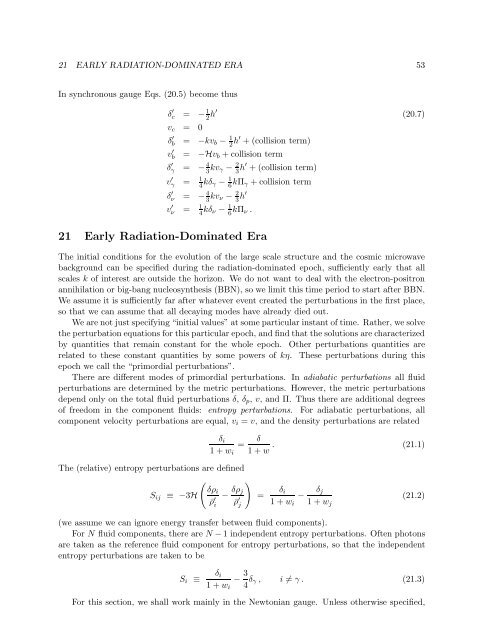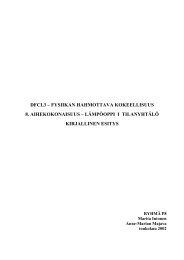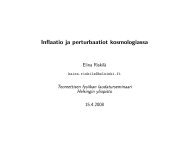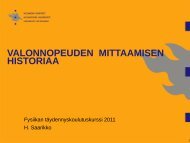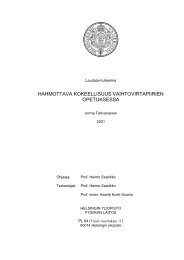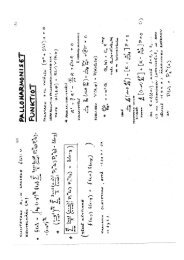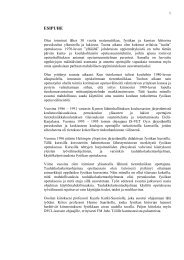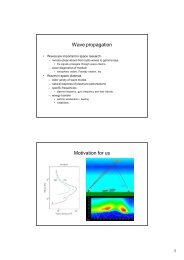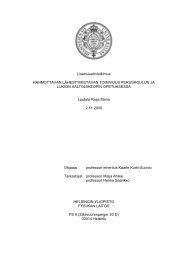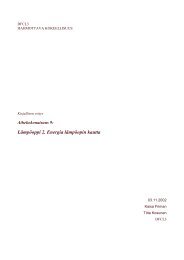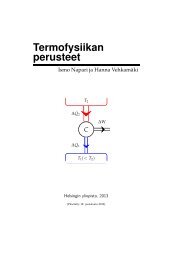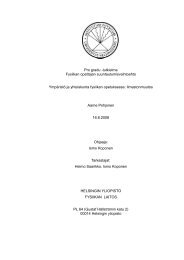Cosmological Perturbation Theory, 26.4.2011 version
Cosmological Perturbation Theory, 26.4.2011 version
Cosmological Perturbation Theory, 26.4.2011 version
Create successful ePaper yourself
Turn your PDF publications into a flip-book with our unique Google optimized e-Paper software.
21 EARLY RADIATION-DOMINATED ERA 53In synchronous gauge Eqs. (20.5) become thusδ ′ c = − 1 2 h′ (20.7)v c = 0δ ′ bv ′ bδ ′ γ= −kv b − 1 2 h′ + (collision term)= −Hv b + collision term= − 4 3 kv γ − 2 3 h′ + (collision term)v ′ γ = 1 4 kδ γ − 1 6 kΠ γ + collision termδ ′ ν = − 4 3 kv ν − 2 3 h′v ′ ν = 1 4 kδ ν − 1 6 kΠ ν .21 Early Radiation-Dominated EraThe initial conditions for the evolution of the large scale structure and the cosmic microwavebackground can be specified during the radiation-dominated epoch, sufficiently early that allscales k of interest are outside the horizon. We do not want to deal with the electron-positronannihilation or big-bang nucleosynthesis (BBN), so we limit this time period to start after BBN.We assume it is sufficiently far after whatever event created the perturbations in the first place,so that we can assume that all decaying modes have already died out.We are not just specifying “initial values” at some particular instant of time. Rather, we solvethe perturbation equations for this particular epoch, and find that the solutions are characterizedby quantities that remain constant for the whole epoch. Other perturbations quantities arerelated to these constant quantities by some powers of kη. These perturbations during thisepoch we call the “primordial perturbations”.There are different modes of primordial perturbations. In adiabatic perturbations all fluidperturbations are determined by the metric perturbations. However, the metric perturbationsdepend only on the total fluid perturbations δ, δ p , v, and Π. Thus there are additional degreesof freedom in the component fluids: entropy perturbations. For adiabatic perturbations, allcomponent velocity perturbations are equal, v i = v, and the density perturbations are relatedδ i= δ1 + w i 1 + w . (21.1)The (relative) entropy perturbations are defined( )δρ iS ij ≡ −3H¯ρ ′ − δρ ji¯ρ ′ j=δ i1 + w i− δ j1 + w j(21.2)(we assume we can ignore energy transfer between fluid components).For N fluid components, there are N −1 independent entropy perturbations. Often photonsare taken as the reference fluid component for entropy perturbations, so that the independententropy perturbations are taken to beS i ≡δ i1 + w i− 3 4 δ γ , i ≠ γ . (21.3)For this section, we shall work mainly in the Newtonian gauge. Unless otherwise specified,


